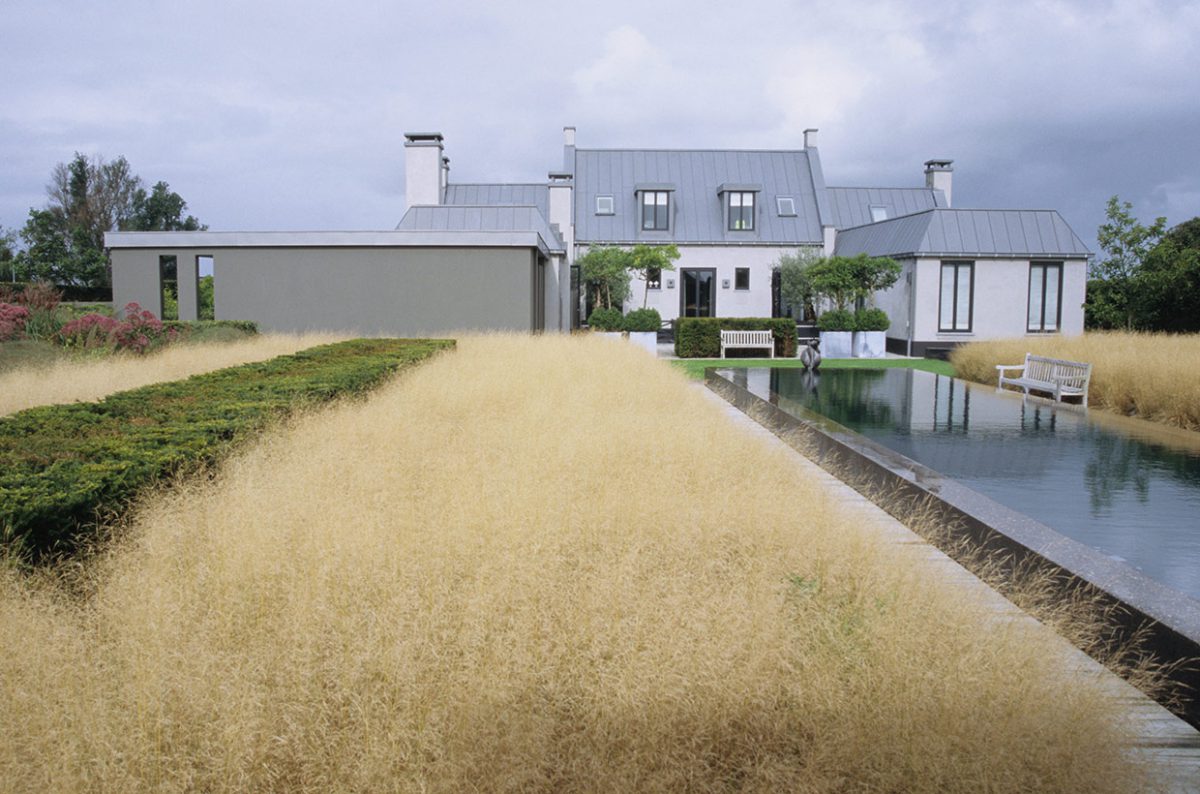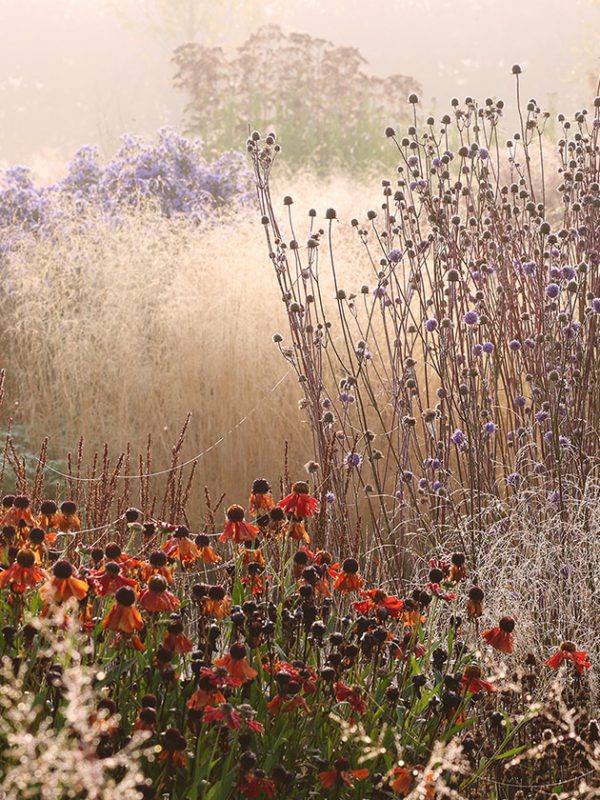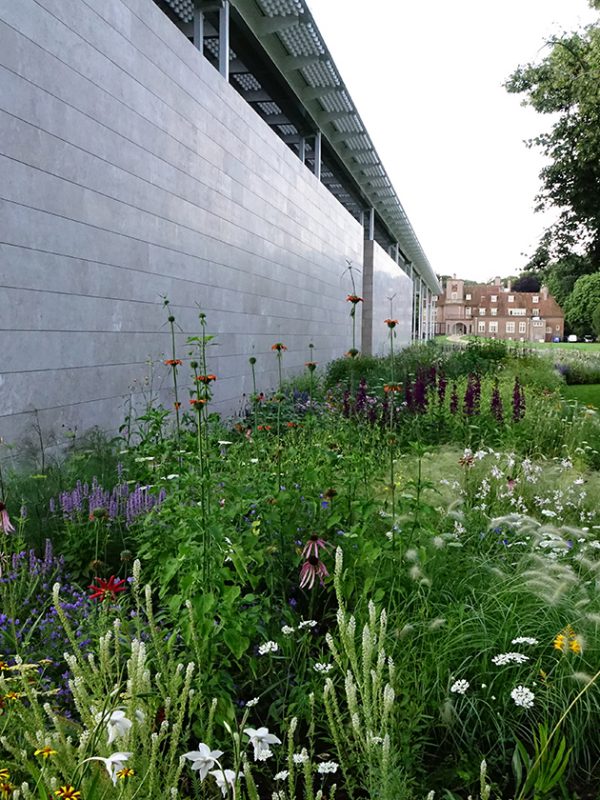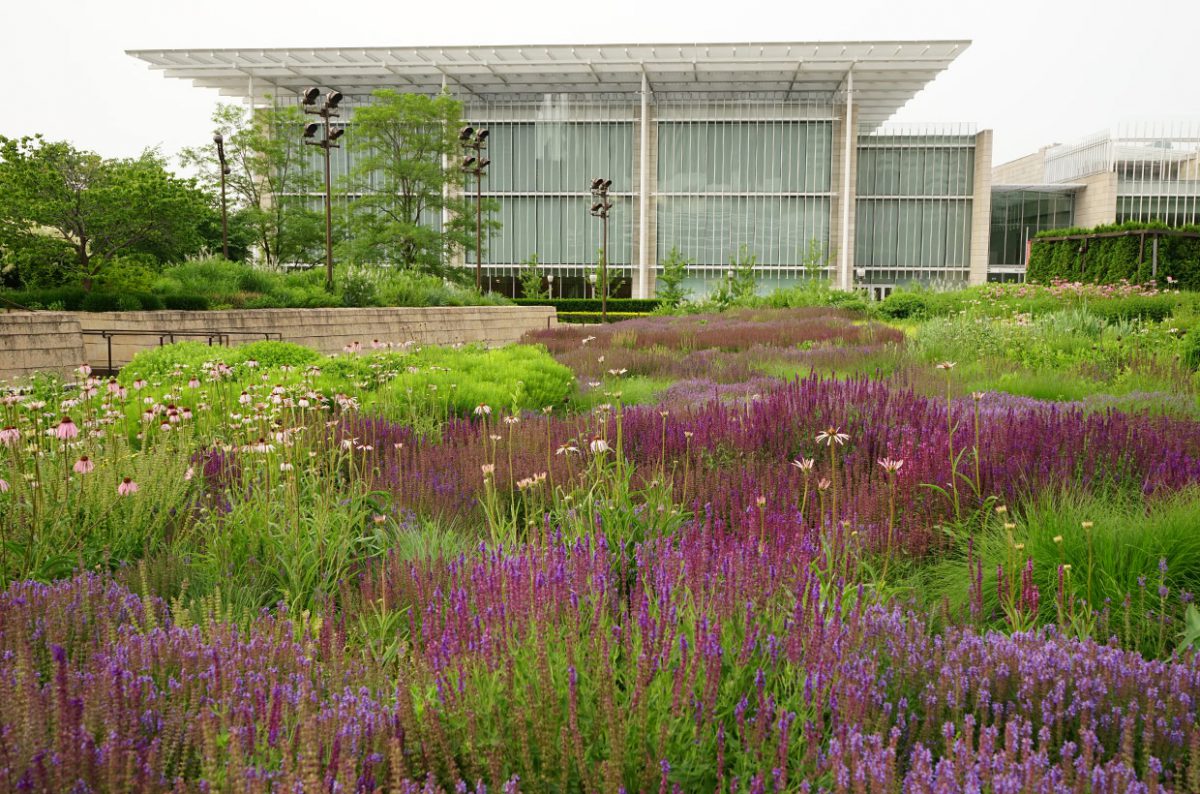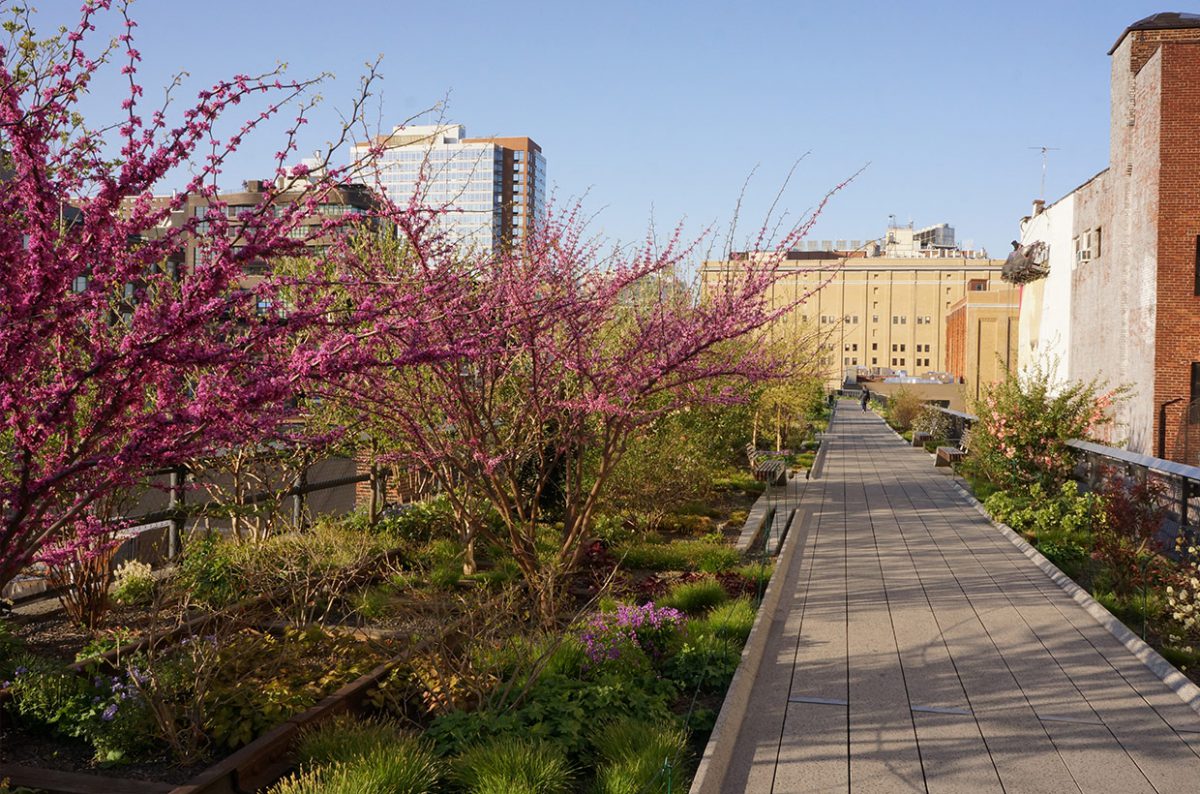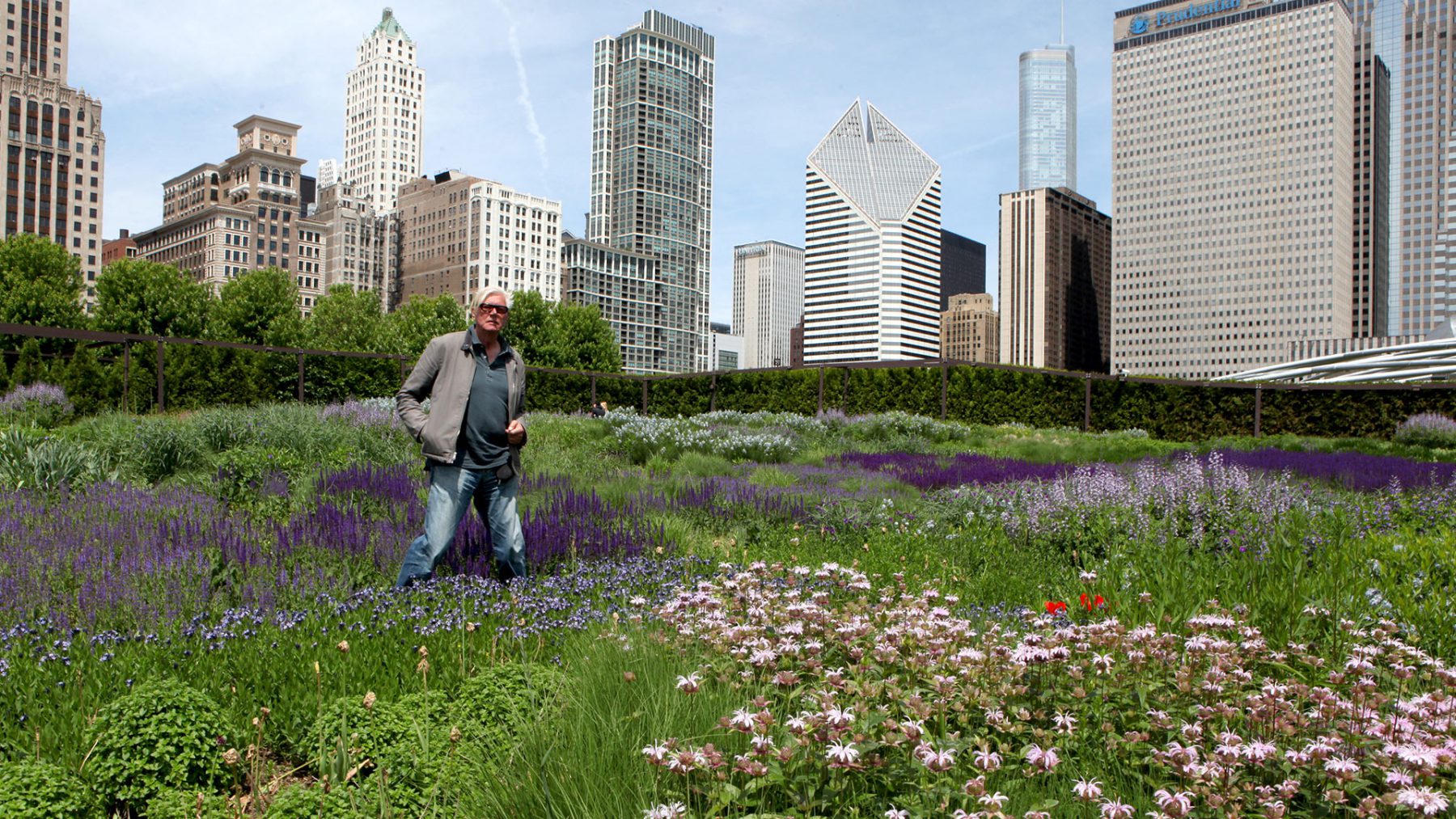Symphony in Green by Uta Abendroth | 16th June, 2017 | Personalities
He’s been called the god of perennials, the rock star of landscaping, the king of naturalism: Piet Oudolf is one of the most famous garden designers in the world. Besides creating part of Battery Park and the High Line in New York, he has also done private gardens and temporary installations, including for the Biennale in Venice. When it comes to the art of arranging plants, Oudolf is second to none.
Piet Oudolf composes symphonies. With prairie lilies and ornamental alliums, with asters, peonies and milkweeds, with beebalm, meadow rue, moor grass, forget-me-nots and viper’s bugloss. The Dutchman is considered the best and most influential garden designer in the world today. He is unparalleled when it comes to combining trees, grasses, hedges, shrubs, annuals and perennials and establishing relationships between them, creating patterns and repetitions that add up to unique arrangements: “I combine plants that feel comfortable with one another,” says the 73-year-old. “It’s a question of aesthetics more than anything else, because gardens are a sort of living picture.” In the past, gardening as an art form was a profession mainly cultivated by the English. Piet Oudolf was probably the last person on earth who thought he would end up influencing generations of landscape architects and garden designers and casting a spell on visitors with his ingeniously arranged green spaces. When he was in his early 1920s he tried out all sorts of things, working as a waiter in his parents’ restaurant, a barkeeper, steelworker, fishmonger and architect. But he didn’t find any of it particularly satisfying. Then, at 25, he came across a book by English garden designer Beth Chatto. Oudolf set off for Essex, had a look at Chatto’s nursery and discovered his soft spot for plants. Back in his home country, he and his wife Anja opened a nursery in Haarlem in 1982 and began propagating plants that were difficult or impossible to find in the Netherlands at the time. Later the family moved to the village of Hummelo in the Dutch province of Gelderland and laid out a garden around an old farmhouse. The 10,000 square meters of grounds – which are open to the public from May to October (except for July) – are an experimental lab, show garden and nursery all rolled into one. And for Oudolf, the place he laid the foundations for his international success as an innovative garden trendsetter.
At the beginning, when I started exploring the topic, I liked English gardens more than anything else,” says Oudolf. “But then, influenced by Mien Ruys (Editor’s note: full name Wilhelmina Jacoba Moussault-Ruys, one of the first female landscape gardeners in the Netherlands) and friends, I gradually developed a liking for more dynamic and natural gardens. That led to me incorporating wild plants and a lot of different grasses into more and more of my designs – plants that had never been used in gardens before.” For the co-founder of what’s come to be known as the Dutch Wave – a movement that aims to give the plants and their esthetics center stage – it is not the color of a plant that constitutes the decisive criterion, but its structure. For Oudolf, a well-designed garden isn’t only made up of flowers, it includes trees and bushes as well. And it should never be boring: “A good garden is interesting all year round. It’s all about composing a landscape that goes beyond the combination of individual plants. Even decaying, dying plants are beautiful, as are flower skeletons and seedheads. There’s no reason why everything has to flower at the same time.” From the mid-90s, the Dutchman’s art of creating naturalist gardens made him famous the world over. It was around that time that he combined 200 different plant species and varieties in the Drömparken in the center of Enköping, Sweden. The sea of blue woodland sage (Salvia nemorosa) that flowers between June and August is nothing short of captivating. Oudolf’s career gathered momentum; architects started asking him for garden designs that would frame their buildings. Private clients, garden owners, art galleries and museums followed. The projects varied in scale from relatively small all the way to huge – like his design of the High Line in New York. Between 2006 and 2014, an elevated section of a disused railway line in Manhattan was turned into a park. Hovering nine meters above the ground, the spectacular green space measures 2.3 kilometers in length. The kinds of plants Oudolf selected for his design were mainly ones that had already established themselves on the abandoned viaduct – just not in a structured way or in rotation with perennials and shrubs.
Without scrupulously detailed planning, a garden simply won’t work, regardless of whether it’s a public or a private space. It’s all about changing visual reference points in the beds, about playing with sizes and proportions, about rhythm. It’s about ensuring the plants are suited to the climate, temperatures and the amount of rainfall. The design process is complex and time consuming. Oudolf gets to grips with it in the studio in his village, the individual beds spread out before him on long rolls of tracing paper. But it’s certainly not the case that one sheet corresponds to one garden. Instead, the outline of one and the same bed is drawn onto several pieces of the transparent paper. It’s the markings that vary: round squiggles in different colors. The bushes and trees are on one piece of paper, the perennials on the next, the grasses on the third, the seasonal plants on the fourth. Placing them one on top of the other reveals the final concept. When it comes to implementing it, the circles are actually sprayed onto the ground in paint. That way Oudolf can be sure the gardeners render his design one-to-one. It’s fair to say that a great deal of what Oudolf designs ultimately depends on the gardeners. Piet Oudolf works alone – sometimes on more than 15 projects at a time –, draws up his plans and then hands the whole thing over to strangers. It’s a risk. “My work is only ever successful if responsible people take care of everything later on,” he says. “I have to look at the local conditions very carefully, because plants are sensitive and easily damaged. I have to be aware of the prerequisites. That doesn’t just mean being mindful of the budget; you have to think about care and maintenance as well, about the skills of the people who will be looking after the garden once it’s finished.” Piet Oudolf is a quiet, thoughtful man; he’s also creative and extremely patient. And just like an architect who has his own distinctive style, the Dutchman tries to design his projects in such a way that each and every one of them is nevertheless new and feels special. Even if he chooses the same plant varieties, the individual concept he comes up with can be relied on to distinguish the gardens from one another. Above all, Oudolf is proud of his public gardens like the High Line, his section of Battery Park in New York and Leuvehoofd Park in Rotterdam, because they enable him to reach a wide audience and get a lot of feedback. It reassures him that he’s on the right track with his work and strikes a chord: “People have a great need for nature. The fact that they like my work makes me very happy.”
